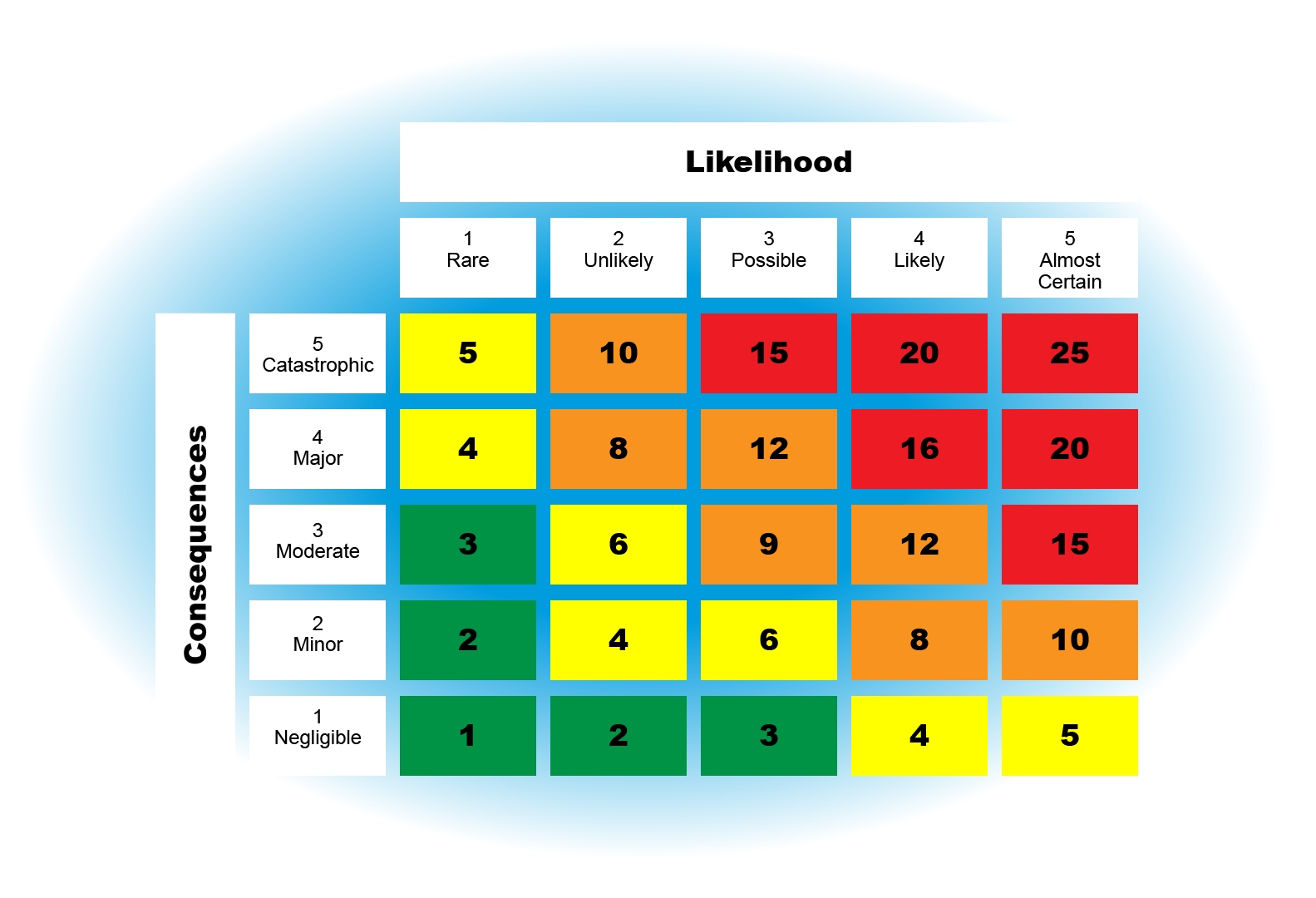Hi,
We’re on to week three of our series on Health and Safety Risk Assessments. This week, it’s step 3 of the 5 step process and we’ll be looking at how to control the risks that we identified in step 2.
But first, we thought we’d show you a little teaser video we put together to give you a bit more information about XenZone, our upcoming online FM training platform. Click on the image below to have a look.
Like what you see? You can join the waiting list by clicking on the red button below.
So, now for today’s topic – step 3 of the process is to control the risks we’ve identified.
Controlling Risk
The diagram below shows what is referred to as the risk hierarchy. The inverted triangle shows the actions you could take to reduce risk from the most effective at the top, down to the least effective at the bottom of the triangle. The idea is that you work down the hierarchy in an attempt to reduce the risk by using the highest possible method.

In last week’s issue, we identified the possible risk of someone falling down the stairs. We gave the likelihood a score of 3 out of a possible 5 and the severity a score of 4, giving an overall risk rating of 12. Let’s see how we can work through the risk hierarchy to reduce this risk.
Elimination
At the top of the hierarchy, we have elimination. This means that you would remove the hazard altogether. This may not always be possible – imagine if you had identified the risk of falling down a flight of stairs in your office. We cannot remove the stairs, therefore we are unable to completely eliminate the risk. However, where possible, if we can remove the risk altogether, this is undeniably the most effective form of risk control.
Substitution
As we cannot take the stairs away, we need to go down to the next potential solution – substitution. Again, it would not be possible to substitute the stairs with an alternative method of vertical transportation.
Whilst we could install a lift, we would still need the stairs for evacuation or if the lift is out of order. So in this example, substitution is not the answer. However, it is the second most effective risk control after elimination and so always worth considering if possible.
Isolation
If we can’t eliminate or substitute the risk, we drop down to the next potential solution – isolation. This would mean denying or restricting access to the area where we have identified the risk. In the example of the office stairs, this would mean preventing employees from using the stairs altogether. Again, not a practical solution.
Engineering Controls
The next level down would be to use engineering controls. These usually apply to the use of machinery and include examples such as extraction machines to remove hazardous dust or fumes from the air, enclosing dangerous items of machinery or moving parts, or installing guardrails. So probably not useful in our stairs example.
Administrative Controls
Our next option would be to use administrative controls. That is, getting people to change the way they work or act. Now we have a viable solution.
We could insist that people using the stairs must hold onto the banister as one example, so they can only carry items in one hand, with the other being free at all times to hold onto the banister.
We could also insist that they always stick to the left hand side, so people who are ascending will never collide with those who are descending.
Insisting on these actions would reduce the likelihood of someone falling down the stairs. With these risk controls in place, we can now reassess the risk rating.
We might say that the likelihood of someone falling has now reduced to 1. However, should someone fall, the severity would remain the same. Our risk rating now would be 1 x 4 = 4.
If you look at the risk matrix, you can see that this risk rating falls at the bottom end of the yellow category. Given that we cannot remove the risk altogether, this would be classed as acceptable.

You’re not expected to eliminate all risks, but you do need to do everything reasonably practicable to protect people from harm. This means balancing the level of risk against the measures needed to control the real risk in terms of money, time or trouble.
A final note to explain the hierarchical nature of the risk controls. The reason that admin controls and the wearing of personal protective equipment are at the bottom of the hierarchy (i.e. the least preferable options) is that they both rely on people to act in an appropriate way. This can be difficult to enforce and you cannot always rely on people to do as they are told.
Personal Protective Equipment (PPE)
It is worth noting that the use of PPE is probably the only control that will result in a reduction of the severity of an injury should an accident happen.
With this in mind, it is often worth combining PPE with one of the other parts of the hierarchy in order to reduce both the likelihood and the severity of the risk.
Clearly this isn’t always possible (you wouldn’t expect people to don PPE whenever they take the stairs!) but where reasonable it can be an effective way of reducing risk.
Right, that’s all for now – quite a long one today but definitely an important one. This is a key part of the risk assessment process as reducing risk is what this entire process is really all about.
We’ll be back next week with the final part of this series – steps 4 and 5 of the process.
In the meantime, have a great week!
Chris and the Xenon Team
P.S. If you haven’t already studied or started studying for an IWFM qualification, which will cover topics like this in depth and fully assess your understanding, you may want to have a look at our guide to the IWFM Qualifications which will give you a full breakdown of how they work and what’s involved in the different levels. You can download it here.
P.P.S. If you’re already considering taking a qualification but don’t know which level to go for, a good starting point is our One-Minute-Leveller tool, which will ask you a few questions and give you a recommendation based on the result. You can access it here.
P.P.P.S. Don’t forget you can read all of the previous issues on our website. If you’re new to the mailing list or you want to revisit an earlier issue without digging through your inbox, you can find all of our past issues in the Vault.




